
Sonic Adventure is a 1998 platform game developed by Sonic Team and published by Sega for the Dreamcast. It was the first main Sonic the Hedgehog game to feature 3D gameplay. It follows Sonic the Hedgehog, Miles "Tails" Prower, Knuckles the Echidna, Amy Rose, Big the Cat, and E-102 Gamma in their quests to collect the Chaos Emeralds and stop Doctor Robotnik from unleashing Chaos, an ancient evil. Controlling one of the six characters—each with their own abilities—players complete levels to progress the story. Sonic Adventure retains many elements from prior Sonic games, such as power-ups and the ring-based health system. Players can play minigames such as racing and interact with Chao, a virtual pet.

Halo 2 is a 2004 first-person shooter game developed by Bungie and published by Microsoft Game Studios for the Xbox console. Halo 2 is the second installment in the Halo franchise and the sequel to 2001's critically acclaimed Halo: Combat Evolved. The game features new weapons, enemies, and vehicles, another player character, and shipped with online multiplayer via Microsoft's Xbox Live service. In Halo 2's story mode, the player assumes the roles of the human Master Chief and alien Arbiter in a 26th-century conflict between the United Nations Space Command, the genocidal Covenant, and later, the parasitic Flood.

Beyond Good & Evil is a 2003 action-adventure game developed and published by Ubisoft for PlayStation 2, Windows, Xbox and GameCube. The story follows the adventures of Jade, an investigative reporter, martial artist, and spy hitwoman working with a resistance movement to reveal a sinister alien conspiracy. Players control Jade and other allies, solving puzzles, fighting enemies, obtaining photographic evidence and, later in the game, travelling to space.
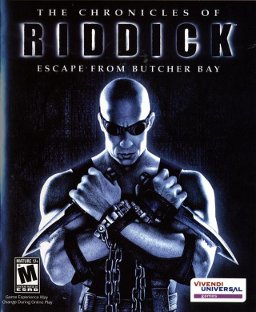
The Chronicles of Riddick: Escape from Butcher Bay is a first-person action and stealth video game developed by Starbreeze Studios and Tigon Studios, and was published by Vivendi Universal Games. Released for the Xbox and Microsoft Windows in 2004, the game's story is a prequel to the futuristic science fiction film Pitch Black. Actor Vin Diesel—who was involved in the game's development—reprises his role as that film's protagonist, Richard B. Riddick.

Meteos is a 2005 tile-matching video game developed by Q Entertainment and published by Bandai for the Nintendo DS. It was produced by Q Entertainment founder Tetsuya Mizuguchi and designed by Masahiro Sakurai. Meteos was inspired by the video game Missile Command (1980), the film The Matrix (1999) and the television series 24 (2001-2010).
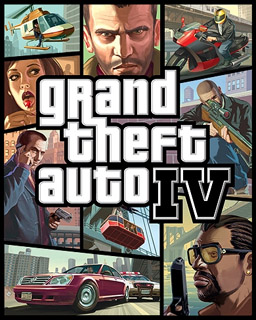
Grand Theft Auto IV is a 2008 action-adventure game developed by Rockstar North and published by Rockstar Games. It is the sixth main entry in the Grand Theft Auto series, following 2004's Grand Theft Auto: San Andreas, and the eleventh instalment overall. Set in the fictional Liberty City, based on New York City, the single-player story follows Eastern European war veteran Niko Bellic and his attempts to escape his past while under pressure from high-profile criminals. The open world design lets players freely roam Liberty City, consisting of three main islands, and the neighbouring state of Alderney, which is based on New Jersey.

Propaganda Games was a Canadian video game development studio based in Vancouver, British Columbia, founded by Josh Holmes in 2005, and bought by Disney Interactive Studios, the interactive subsidiary of the Walt Disney Company at the same year. In January 2011, Propaganda Games was closed.

Sonic the Hedgehog is a 2006 platform game developed by Sonic Team and published by Sega. It was produced in commemoration of the Sonic series' 15th anniversary and intended as a reboot for the seventh-generation video game consoles. Players control Sonic, Shadow, and the new character Silver, who battle Solaris, an ancient evil pursued by Doctor Eggman. Each playable character has his own campaign and abilities, and must complete levels, explore hub worlds and fight bosses to advance the story. In multiplayer modes, players can work cooperatively to collect Chaos Emeralds or race to the end of a level.

Bomberman: Act Zero is a maze video game developed by Hudson Soft for the Xbox 360 in 2006 and published by Hudson Soft in Japan and Konami worldwide. It is noteworthy for its departure from standard titles in the Bomberman series; it features more realistic graphics and a dark, dystopian future setting. The game was panned by critics and fans, and is considered one of the worst video games ever made.

Rockstar Games Presents Table Tennis is a 2006 table tennis simulation video game developed by Rockstar San Diego and published by Rockstar Games. The game is a realistic simulation of the sport table tennis, with the main objective to make the opponent fail to hit the ball.

Kingdom Hearts III is a 2019 action role-playing game developed and published by Square Enix for the PlayStation 4, Xbox One, Windows, and Nintendo Switch. It is the twelfth installment in the Kingdom Hearts series, and serves as a conclusion of the "Dark Seeker Saga" story arc that began with the original game. Set after the events of Kingdom Hearts 3D: Dream Drop Distance, returning protagonist Sora is joined by Donald Duck, Goofy, King Mickey, and Riku in their search for seven guardians of light as they attempt to thwart Xehanort's plan to bring about a second Keyblade War. Their journey has them cross paths with characters and visit worlds based on different Disney and Pixar intellectual properties.
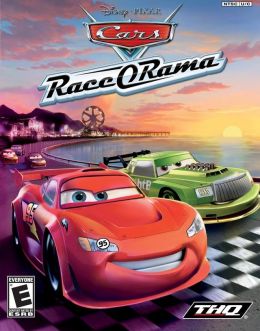
Cars Race-O-Rama is a 2009 racing game published by THQ for the PlayStation 2, PlayStation 3, Xbox 360, Wii, Nintendo DS, and PlayStation Portable. The game is the sequel to Cars Mater-National Championship (2007).

Marvel vs. Capcom 3: Fate of Two Worlds is a crossover fighting video game developed by Capcom in collaboration with Eighting. The game features characters from both Capcom's video game franchises and comic book series published by Marvel Comics. It was released for the PlayStation 3 and Xbox 360 consoles in February 2011. It is the sequel to 2000's Marvel vs. Capcom 2: New Age of Heroes, the fifth installment of the Marvel vs. Capcom franchise, and the first to use three-dimensional character models instead of two-dimensional sprites.
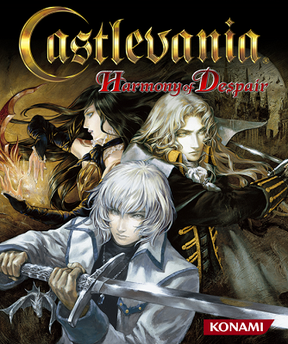
Castlevania: Harmony of Despair is a multiplayer-focused platform-adventure game in the Castlevania series, featuring an ensemble cast of characters from the 2-D Metroidvania era of games, developed and published by Konami for Xbox 360 in August 2010, and for PlayStation 3 in 2011.

Lego Pirates of the Caribbean: The Video Game is a Lego-themed action-adventure video game developed by Traveller's Tales and published by Disney Interactive Studios. Released in May 2011, to coincide with the release of Pirates of the Caribbean: On Stranger Tides, the game is based on the Pirates of the Caribbean film series, and its storyline covers the first four films. The game is available on the Microsoft Windows, Mac OS X, Nintendo 3DS, Nintendo DS, PlayStation 3, PlayStation Portable, Wii, Xbox 360.
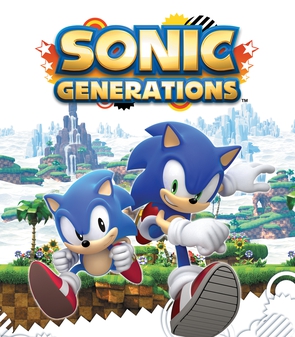
Sonic Generations is a 2011 platform game developed by Sonic Team and published by Sega for the PlayStation 3, Xbox 360, Windows, and Nintendo 3DS. Produced in commemoration of the 20th anniversary of the Sonic the Hedgehog series, the game follows Sonic and his sidekick Tails as they form an alliance with their modern selves. It features two gameplay styles: "Classic", which plays from a side-scrolling perspective like that of the original Sega Genesis Sonic games, and "Modern", 3D levels similar to those in Sonic Unleashed (2008) and Sonic Colors (2010).

The Last of Us is a 2013 action-adventure game developed by Naughty Dog and published by Sony Computer Entertainment. Players control Joel, a smuggler tasked with escorting a teenage girl, Ellie, across a post-apocalyptic United States. The Last of Us is played from a third-person perspective. Players use firearms and improvised weapons and can use stealth to defend against hostile humans and cannibalistic creatures infected by a mutated fungus. In the online multiplayer mode, up to eight players engage in cooperative and competitive gameplay.

Disney Infinity is a 2013 toys-to-life action-adventure game published by Disney Interactive Studios. It was announced on January 15, 2013. The game used collectible figurines that were then synchronized with the game, unlocking characters from Disney and Pixar properties that interact and go on adventures. The game was released for Xbox 360, PlayStation 3, Wii, Wii U, and Nintendo 3DS in August 2013. A PC version of Toy Box was also released on November 14, 2013. The game had a budget approaching $100 million. A sequel, Disney Infinity 2.0, was released on September 23, 2014. The third edition, Disney Infinity 3.0, was released on August 30, 2015, and introduced support for the Apple TV. This game was also later released on Microsoft Windows in 2013.
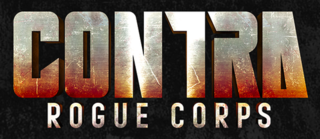
Contra: Rogue Corps is a run and gun twin-stick shooter in the Contra series developed by Toylogic and published by Konami. It was released on September 24, 2019 for the Nintendo Switch, PlayStation 4, Windows, and Xbox One.


















